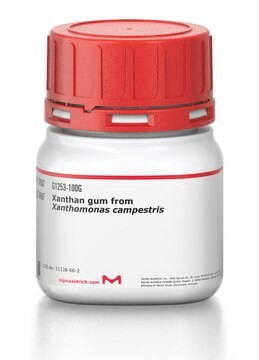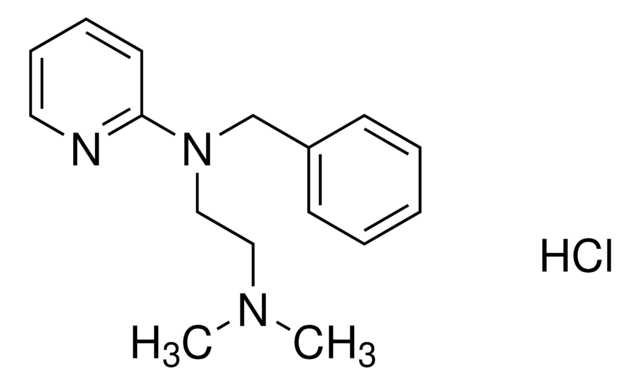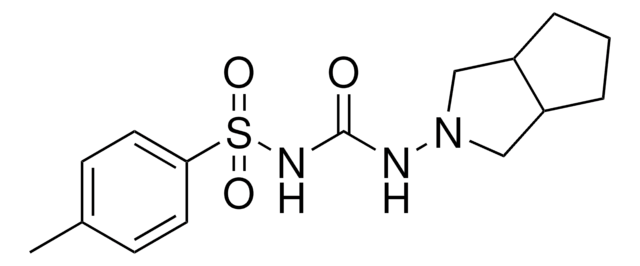G9752
Gum arabic from acacia tree
branched polysaccharide
Synonym(s):
Acacia gum
Sign Into View Organizational & Contract Pricing
All Photos(2)
About This Item
Recommended Products
biological source
plant (Acacia)
Quality Level
form
powder
color
white to faint beige
storage temp.
room temp
Looking for similar products? Visit Product Comparison Guide
General description
Gum arabic from acacia tree is extracted from the branches of Acacia senegal and Acacia seyal trees. It is an edible dried gummy exudate. Gum Arabic has high solubility and is used in food industry as a stabilizer, emulsifier, flavouring agent, thickener and surface-finishing agent. It initiates turbidity or hinders sugar crystallization. Gum arabic inhibits color pigmentation and protein precipitation in wine production.
Application
Gum arabic from acacia tree has been used:
- as an emulsifying agent to determine lipase activity in shrimps
- for the visualization of mossy fiber sprouting
- as an immunogen and for coating microtitre wells in plate-trapped antigen ELISAs (PTA-ELISAs)
- for silver enhancement for immunohistochemistry
- as a component for Timm′s staining solution
- in nitrocellulose-based soil adhesion assay
- to separate few-layer graphene (FLG) from bulk graphite layers
Other Notes
Believed to be a branched polymer of galactose, rhamnose, arabinose, and glucuronic acid as the calcium, magnesium, and potassium salts with a mol. wt. of approx. 250,000.
To gain a comprehensive understanding of our extensive range of Polysaccharides for your research, we encourage you to visit our Carbohydrates Category page.
Storage Class Code
11 - Combustible Solids
WGK
WGK 3
Flash Point(F)
Not applicable
Flash Point(C)
Not applicable
Personal Protective Equipment
dust mask type N95 (US), Eyeshields, Gloves
Certificates of Analysis (COA)
Search for Certificates of Analysis (COA) by entering the products Lot/Batch Number. Lot and Batch Numbers can be found on a product’s label following the words ‘Lot’ or ‘Batch’.
Already Own This Product?
Find documentation for the products that you have recently purchased in the Document Library.
Customers Also Viewed
The use of electron microscopic immunocytochemistry with silver-enhanced 1.4-nm gold particles to localize GAD in the cerebellar nuclei.
GilerovitchHG, et al.
The Journal of Histochemistry and Cytochemistry, 43(3), 337-343 (1995)
Dimensionality effects of carbon-based thermal additives for microporous adsorbents
Yang S, et al.
Materials & Design, 85, 520-526 (2015)
Monoclonal antibodies that differentiate between gum arabic, gum seyal and combretum gum
Dewey FM, et al.
Food and agricultural immunology, 9(2), 123-134 (1997)
Xenograft of human umbilical mesenchymal stem cells from Wharton?s jelly as a potential therapy for rat pilocarpine-induced epilepsy
Huang P, et al.
Brain, behavior, and immunity, 54(3), 45-58 (2016)
A quantitative method for the high throughput screening for the soil adhesion properties of plant and microbial polysaccharides and exudates
Akhtar J, et al.
Plant and Soil, 1-9 (2018)
Our team of scientists has experience in all areas of research including Life Science, Material Science, Chemical Synthesis, Chromatography, Analytical and many others.
Contact Technical Service









